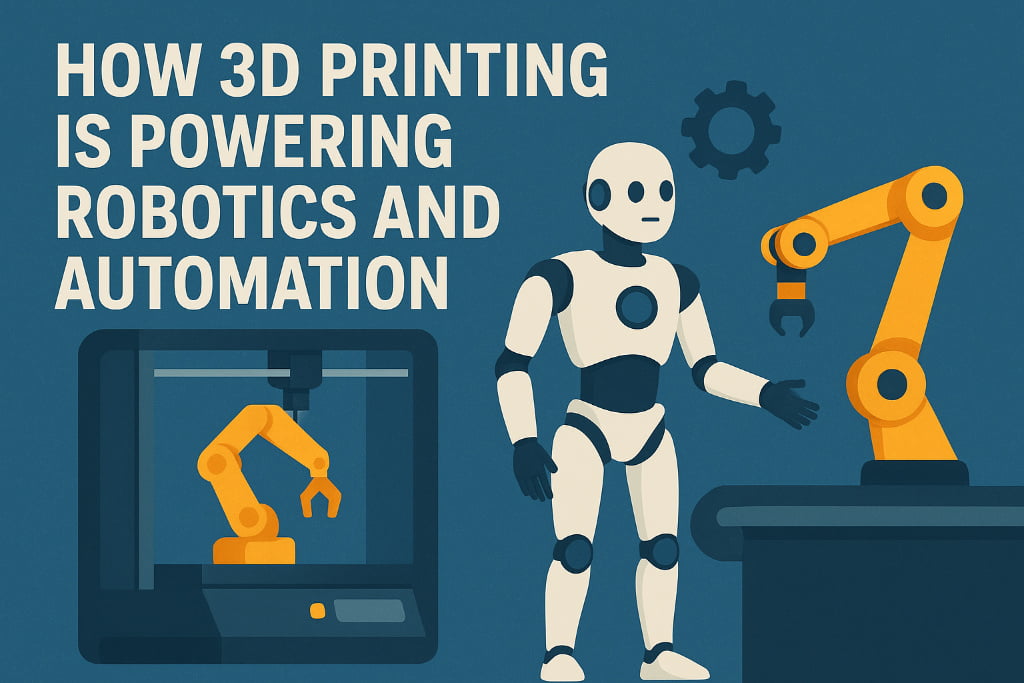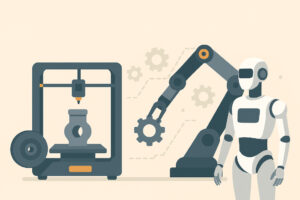
- +91 8055996347
- info@3dreality.in
- Chapru nagar square, CA road, Nagpur, Maharashtra-440008

Robotics and automation are changing the way industries work, making processes faster, smarter, and more efficient. But there’s another technology that is accelerating this revolution—3D printing. From building customized robot parts to enabling rapid prototyping, 3D printing is playing a crucial role in shaping the future of robotics and automation.
In this blog, we’ll break down how 3D printing supports robotics, why industries are adopting it, and what benefits it brings.
Designing a robot involves several stages of testing and improvements. Traditionally, making prototypes was expensive and time-consuming. With 3D printing, engineers can design, print, and test a prototype within hours or days instead of weeks.
For example, if a robotic arm needs a new joint, engineers can quickly print the part, test it, and redesign if needed. This saves time, reduces costs, and speeds up innovation.
Every robot is designed for a specific purpose—whether it’s a surgical robot, warehouse automation system, or manufacturing robot. This means each one requires unique parts. 3D printing allows companies to create custom components on-demand without waiting for mass production.
Robotics companies can now print lightweight yet strong parts tailored to their needs, which is not possible with traditional manufacturing.
Building robots traditionally involves using CNC machines, molds, or expensive manufacturing tools. This process is not only costly but also wasteful.
With 3D printing, manufacturers can produce parts directly from digital designs, reducing material waste and lowering production costs. Startups and small businesses benefit the most since they don’t need huge investments to begin building functional robots.
Robots often need to be lightweight yet durable. For example, a warehouse robot carrying heavy packages works more efficiently if its body parts are light but strong.
3D printing uses advanced materials like carbon-fiber composites, nylon, and metal powders to create such components. This makes robots faster, more energy-efficient, and longer-lasting.

Automation requires machines that can be easily modified, upgraded, and adapted to new tasks. With 3D printing, engineers can quickly redesign parts to improve performance.
For example, in assembly lines, if a robotic gripper needs to handle a new type of product, the team can simply print a new gripper head instead of redesigning the whole robot. This flexibility helps industries stay ahead of competition.
In automation-heavy industries like manufacturing, downtime can be very costly. If a robot breaks down, waiting for replacement parts can delay production.
3D printing solves this problem by allowing companies to print spare parts on-site whenever needed. This ensures minimal downtime and keeps automation systems running smoothly.
Robotics research requires constant testing, experimenting, and building prototypes. Universities, startups, and research labs use 3D printing to create functional models at low cost.
This not only makes robotics more accessible but also helps students and innovators experiment freely without huge budgets.
These examples show how 3D printing is powering automation across different industries.
3D printing and robotics are a perfect match. While robotics brings automation and efficiency, 3D printing provides the speed, flexibility, and cost savings needed to keep innovation alive. Together, they are shaping the future of industries, from healthcare to manufacturing and beyond.
At 3D Reality, we provide professional 3D printing services and design all types of products—from prototypes to custom components for industries like robotics, healthcare, architecture, and more. If you’re looking to bring your ideas to life, we can help you turn your designs into reality.